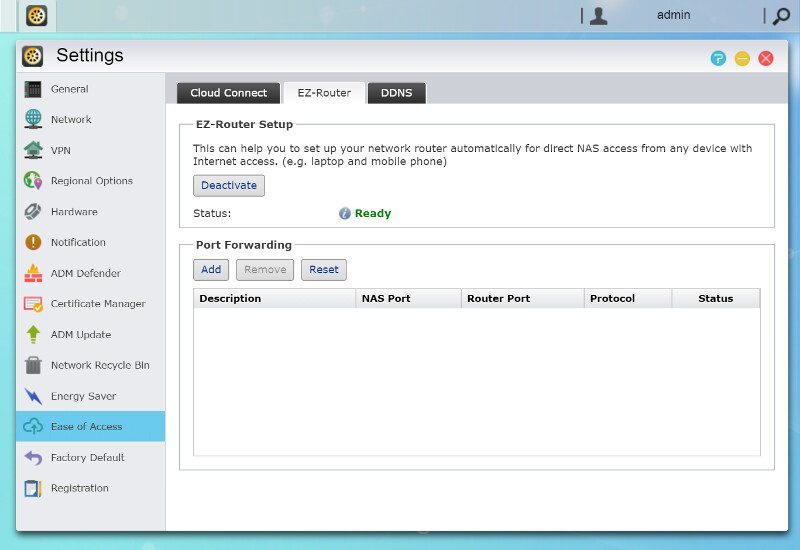ASUSTOR AS3104T 4-Bay SOHO NAS Review
Bohs Hansen / 8 years ago
Setup – Activity, Hardware, Notification & Other System Features
System Information
We’ve created a basic system by now and it might be time to take a look at some of the monitoring and information parts of ADM and the AS3104T. The first place to stop is probably the system information. It will provide information such as what hardware is inside the NAS and the basic settings.
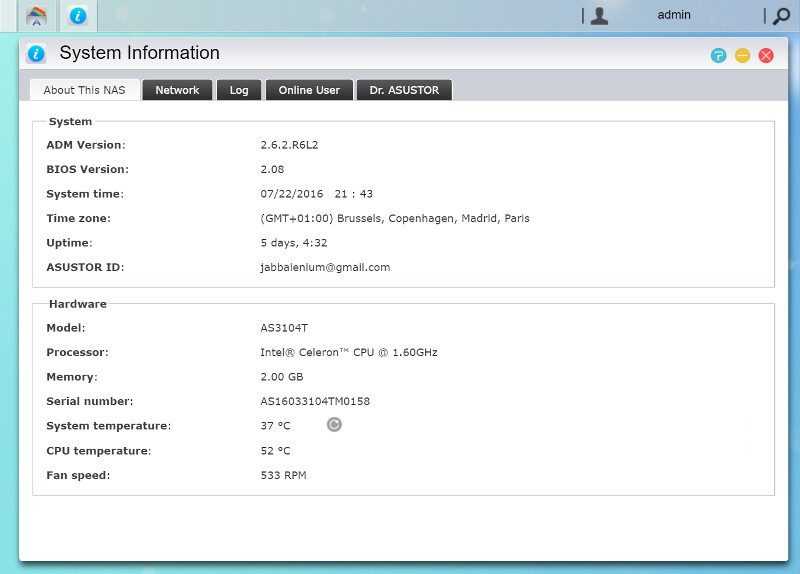
On the first page, we had the general system information and now on the second, we get the network information.
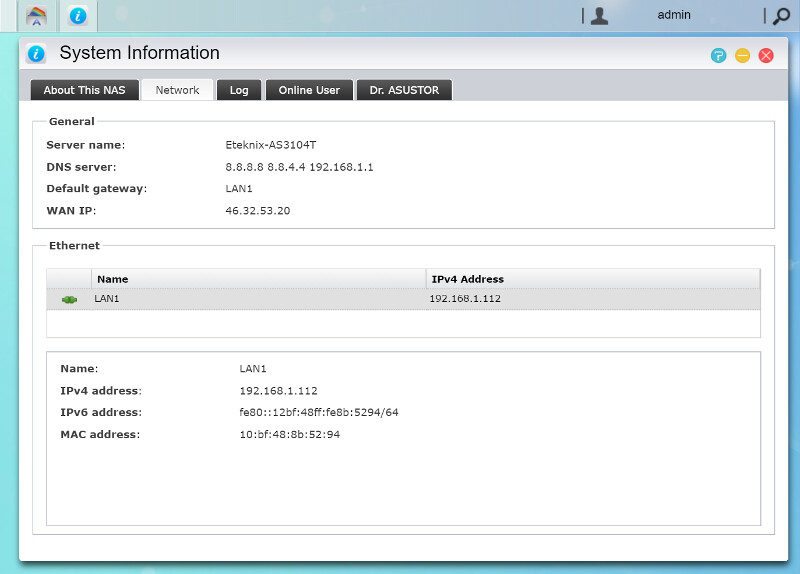
Next up is the logging feature that allows you to watch all events that happened while you were away.
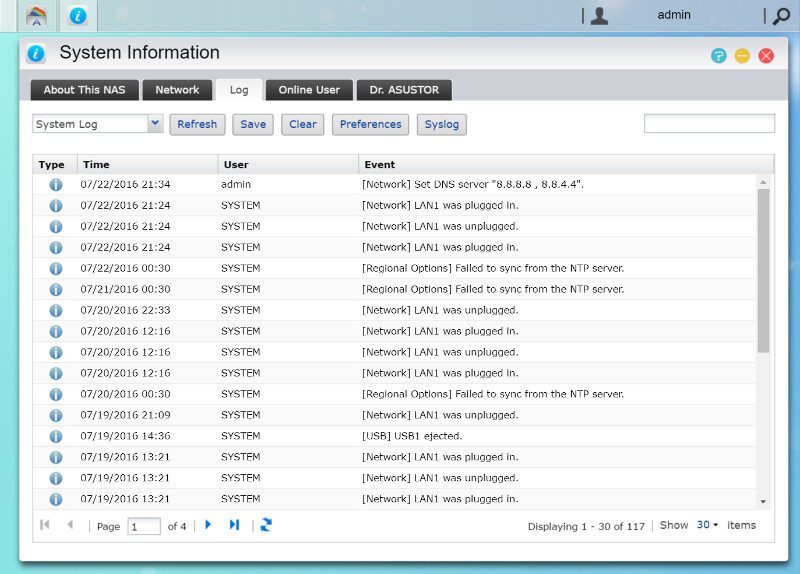
We can also watch what users currently are connected to your NAS, a useful feature when upgrading and rebooting. You don’t want to interrupt and possible corrupt people’s file transfers.
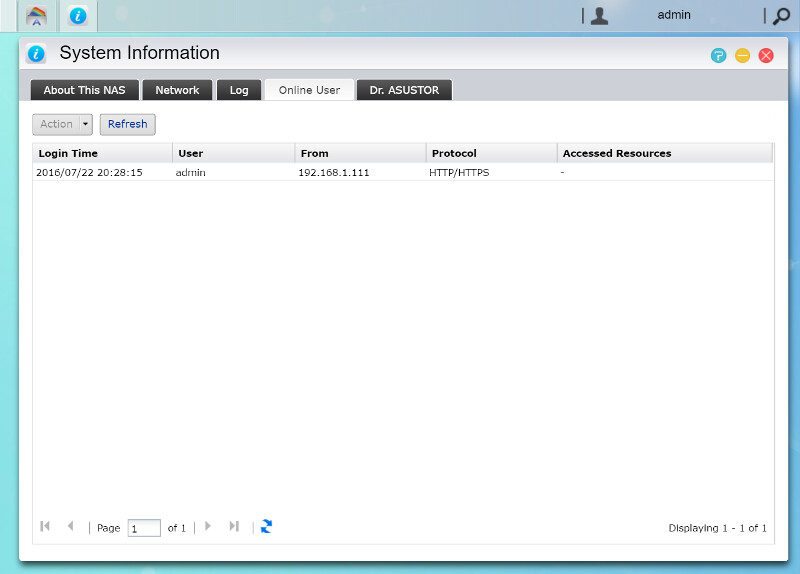
The last page features the Dr. ASUSTOR self-diagnose feature. It will run a quick scan and offer suggestions on improvements.
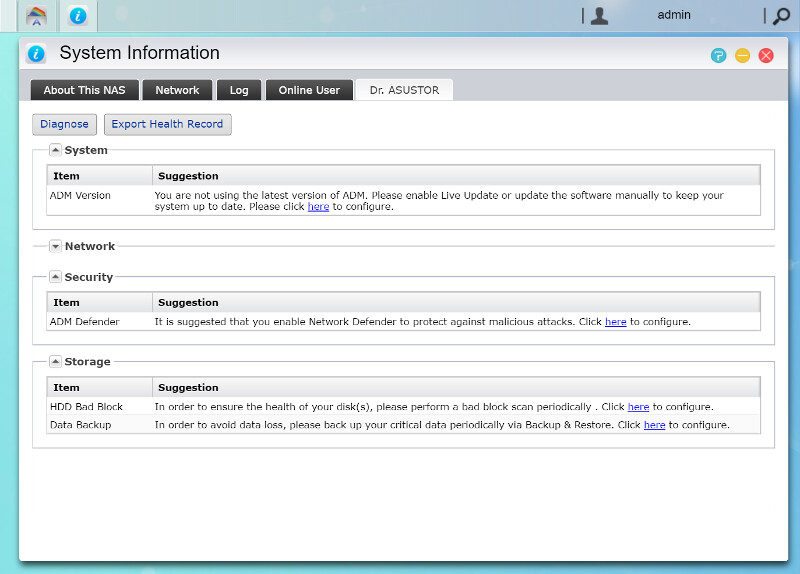
Activity Monitor
Where the storage information brought you static information about your setup, the activity monitor provides a real-time display of usage. We can watch the utilization of each CPU core, how much RAM is being used, and check up on the network traffic.
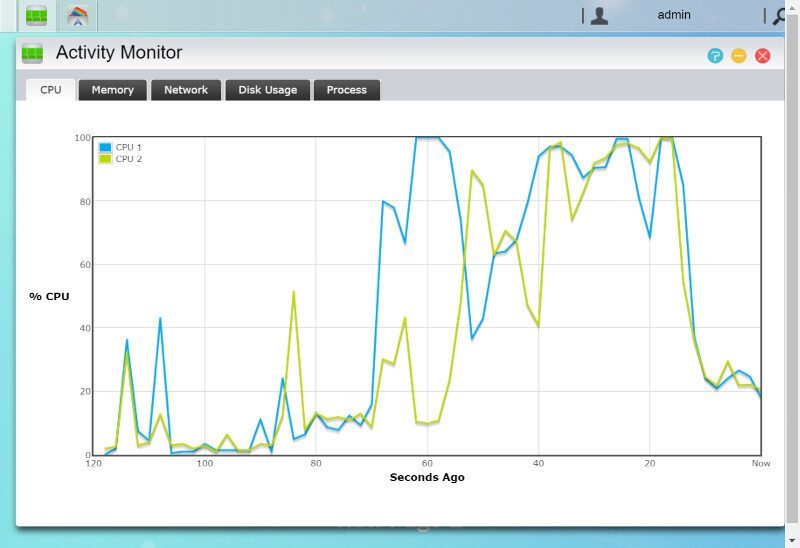
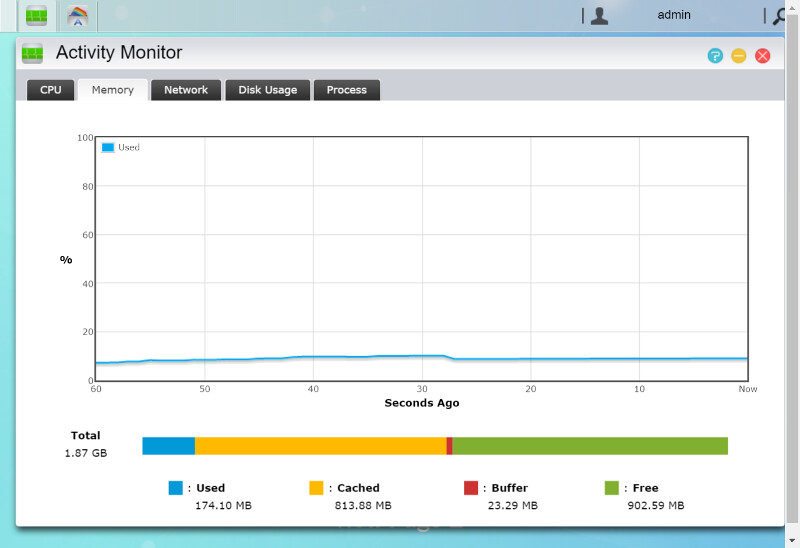
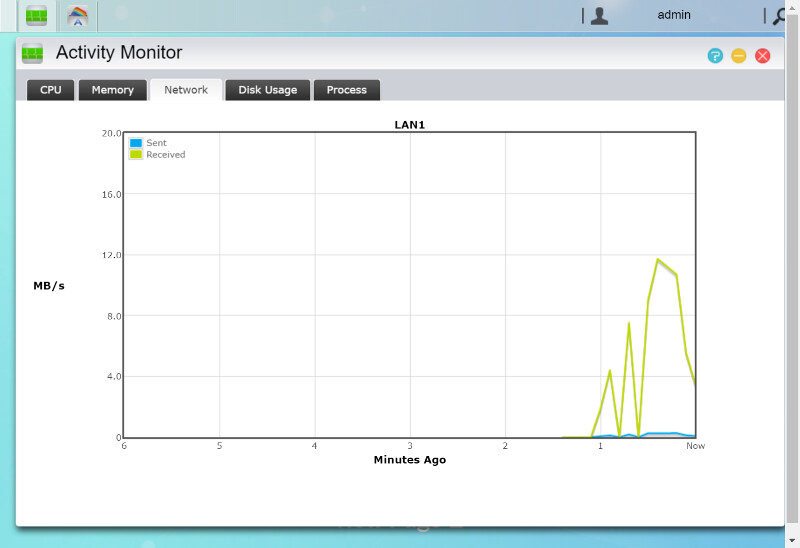
The disk usage graph will give you a view on what drives and volumes are being used and how much. A quick view here could tell you whether it’s time to upgrade or if you’re good for a while longer.
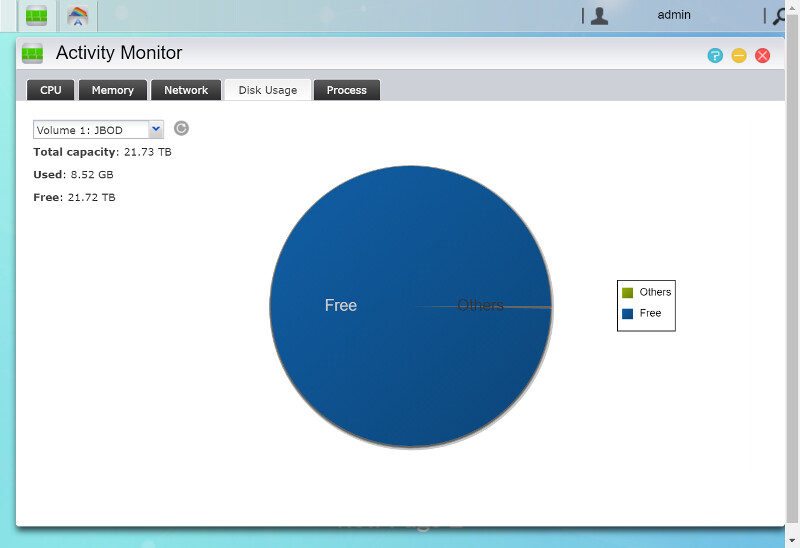
Should you run into bottlenecks or slow performance, then the process page is a good place to stop by. Check up on what feature is dragging your CPU and ram usage down.
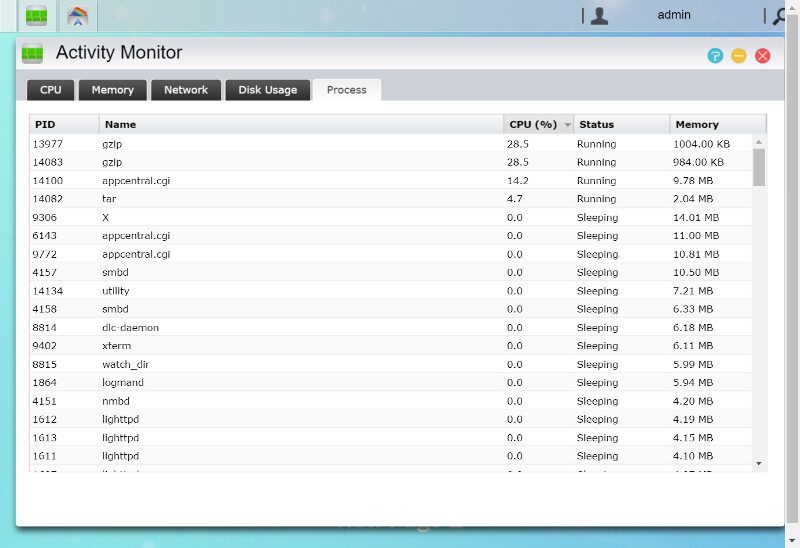
Hardware Settings
The hardware can’t just be monitored, we also get a few things that we can change. One of the coolest features here is the LED brightness adjustment and night mode. Turn those lights off at night so you don’t get annoyed by blinking lights while you try to sleep. The buzzer can also be turned off for specific events and you can disable both the infrared receiver and the reset button here too.
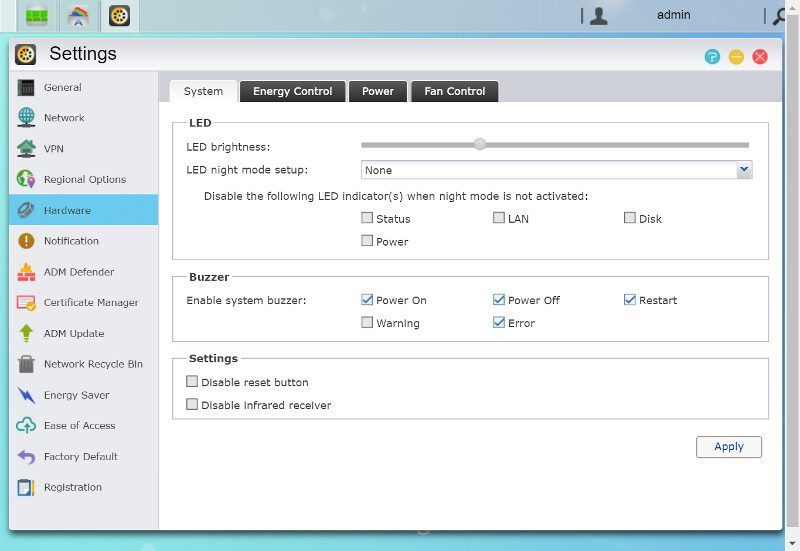
Energy control isn’t just good for the environment and your electricity bill, it’s also great for your hardware. The less it’s being used, the cooler it will run and the longer it will last. Disk hibernation mode is a great way to give your drives a breather while you also decrease the noise generation and increase the drives lifetimes.
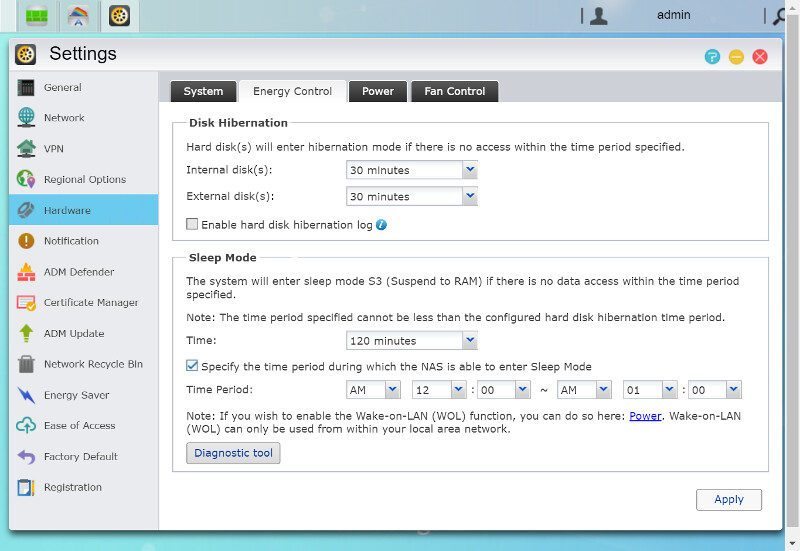
The EU power regulation setup (EuP) is also supported, but you can control it all manually too. Enabling that feature will take over control of the rest that you see here.
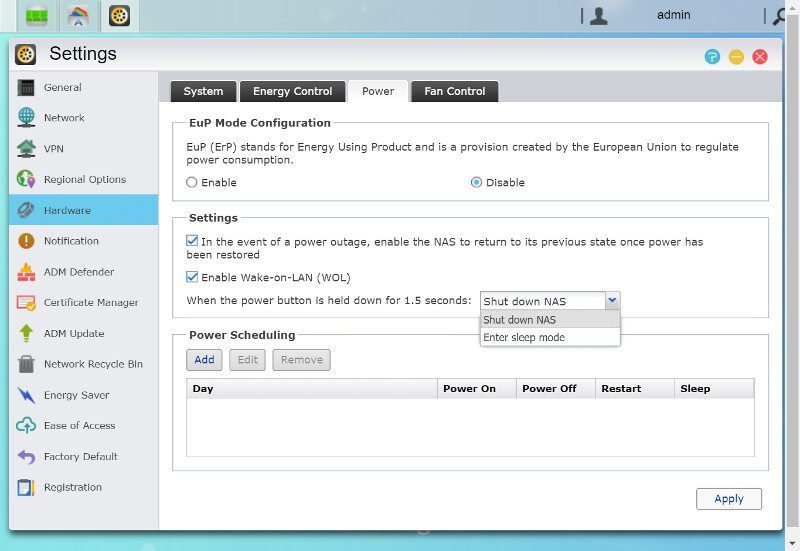
Power scheduling is another great way to save power and increases the lifetime of your hardware. Why have the system running when it isn’t being used. You can schedule power on, power off, restart, and sleep activities for the NAS to do on its own. No need to run the system when you aren’t accessing it anyway.
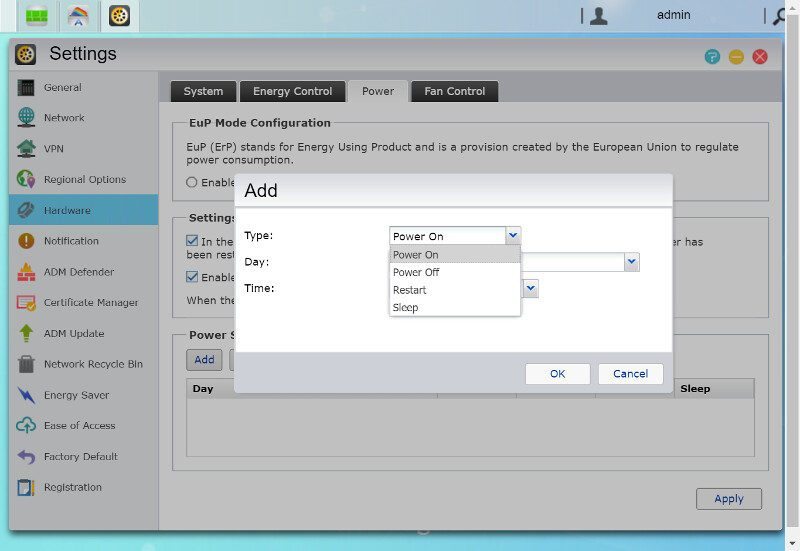
The fan can be automatically adjusted speed wise, but you can also permanently set it to either low, medium, or high. Use these settings with care, you don’t want your NAS to run too hot.
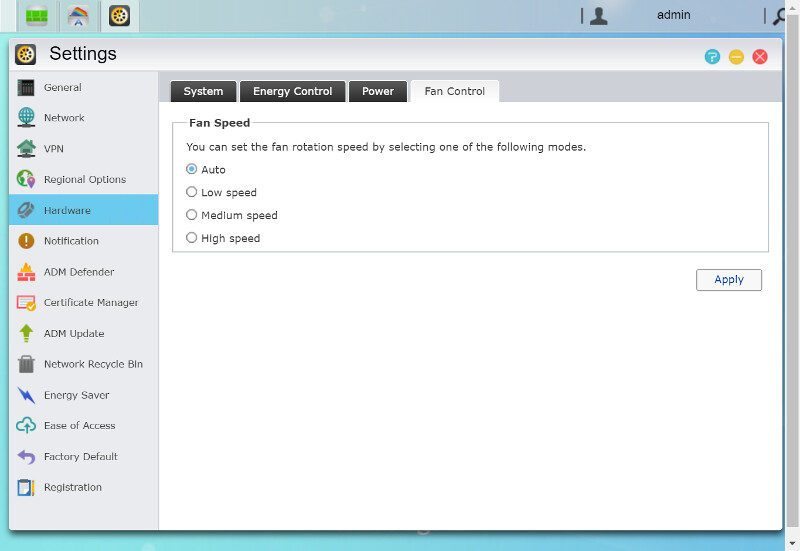
Notification
A headless unit requires a good notification ability to let you know when your actions are required. The AS3104T can both send and receive notifications via different methods. The most common used will probably be via email.
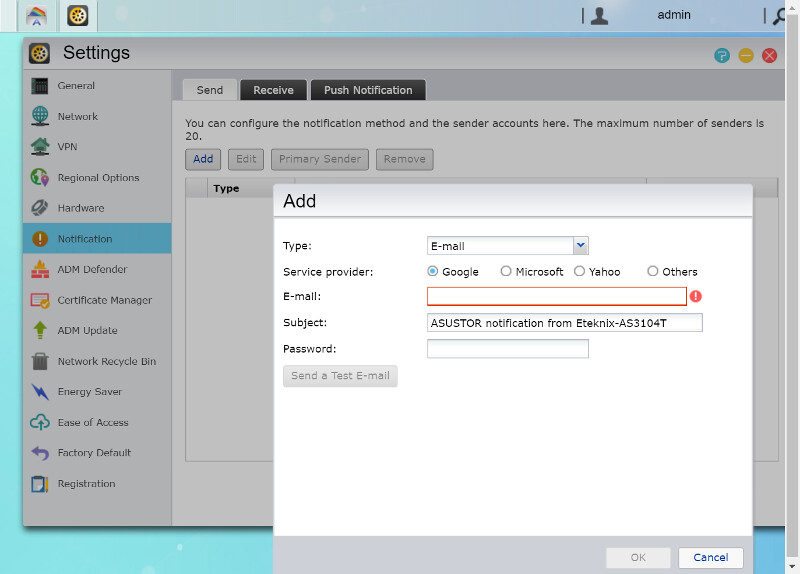
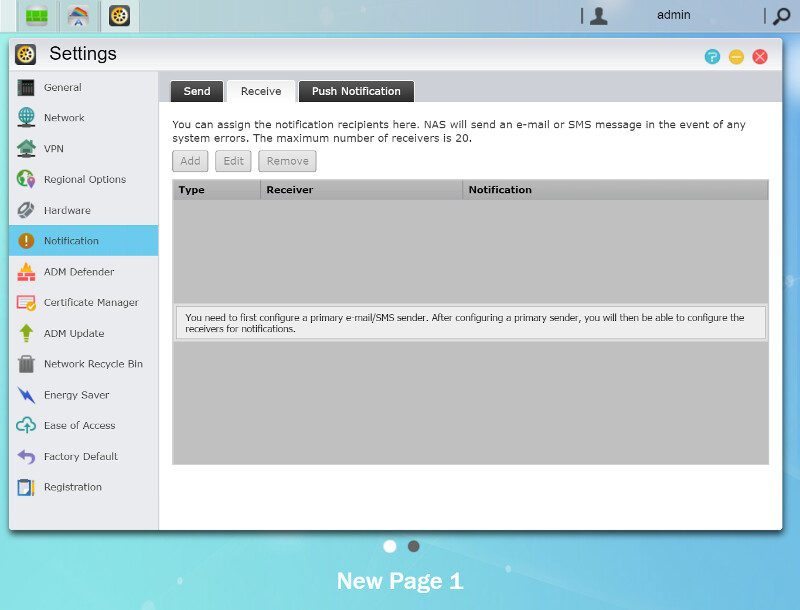
But you can also let the NAS send push notifications to your mobile devices. It does require you to have an iOS or Android powered phone tho, so Windows users are out of luck for now in this aspect. They can still use the good old email function tho.
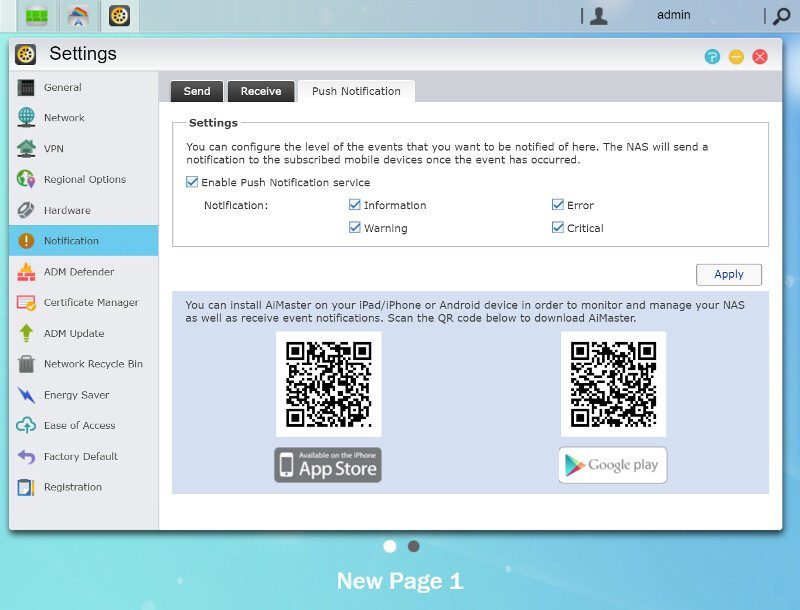
More Features
There are a bunch of features more available in ADM and here are a few more of them in a brief view. The first is the ADM defender, the built-in firewall and network defender. While it’s a simple tool, it is quite effective at what it does.
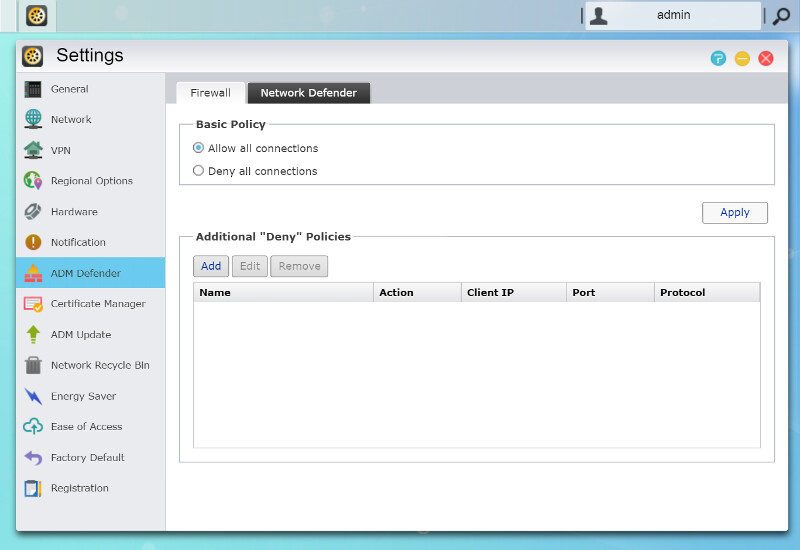
You can create trusted IP lists as well as black and white lists in order to filter traffic and only allow those inside that also should be there.
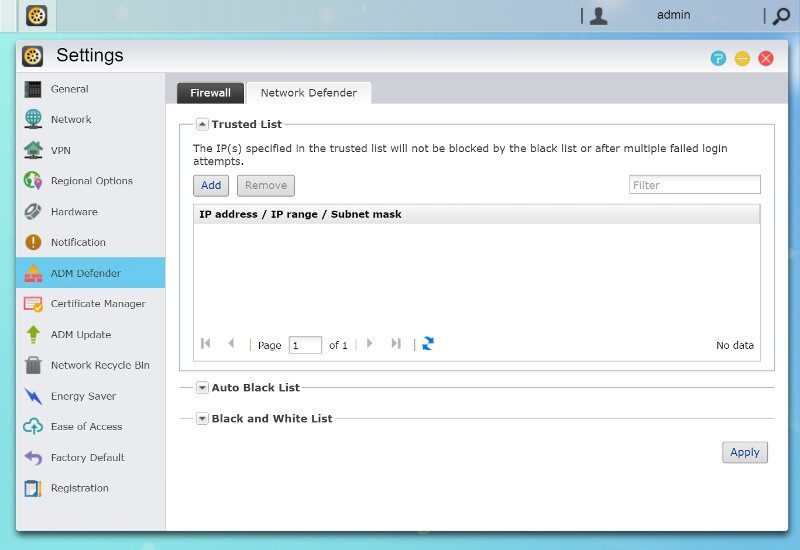
The network recycle bin is another useful feature. No more losing files because you deleted them of a network mounted share. The network recycle bin provides the same security for your network shares as you have on your local computer where you can drag things out of the trash again.
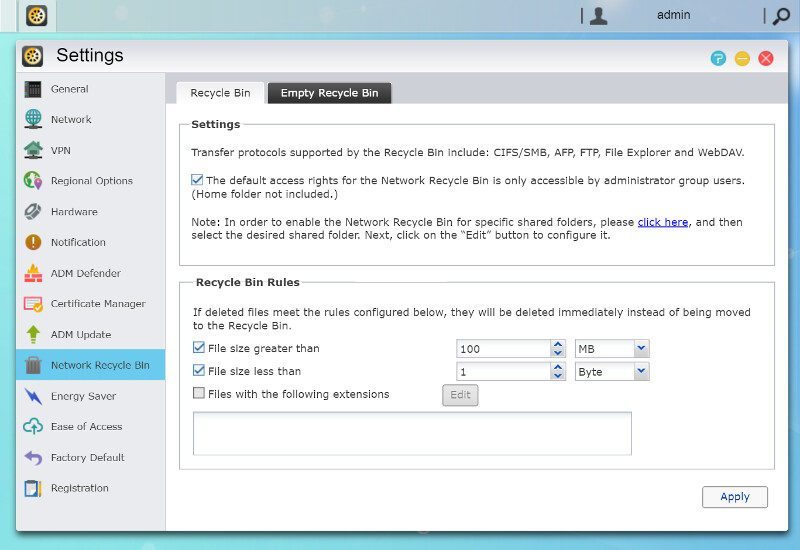
It is also very easy to connect to your ASUSTOR NAS from any remote location. The Cloud connect allows for easy connection through a name instead of a complicated address that even might change regularly.
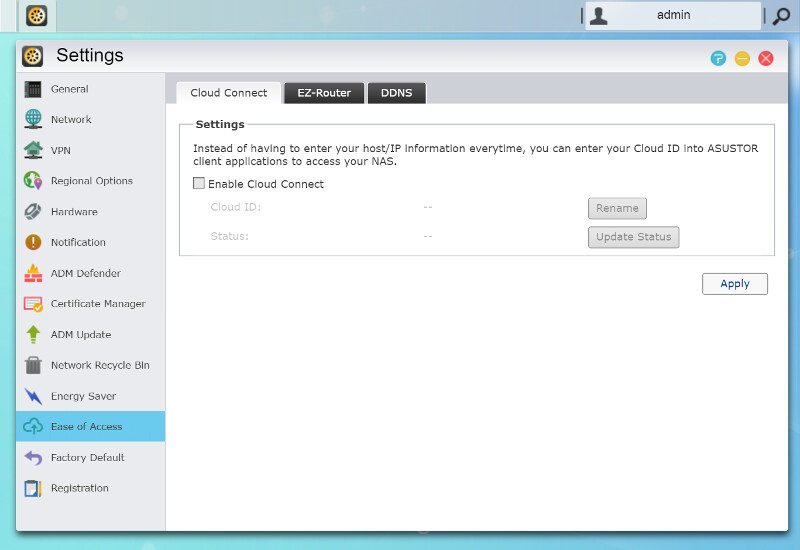
The EZ-Router feature takes advantage of UPnP and can assign ports and forward them properly in your router without you having to do it manually. Having everything controlled from one central location is very convenient.
